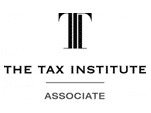My earlier post concerning the Federal Court decision in Rowntree v FCT highlighted the vital evidence required to prove monies transferred from a private company group to its controlling director and shareholder was in fact a non-taxable loan advance. In the recent Full Federal Court decision in Hart v FCT [2018] FCAFC 61 (reported at 2018 WTB 17 [481]), the Appellant taxpayer was faced with a similar issue albeit in relation to a group of associated trusts one of which he exclusively controlled as its putative lender.
Again, much can be learnt from the manner in which the ATO argued its case and practical steps that advisors may prudently adopt to minimise the likelihood of such adverse assessments being raised and successfully pursued against principals of high net worth private trust/company groups.
Brief facts and background
The taxpayer was a lawyer specialising in taxation law and participated as a principal in a law firm conducted through what appeared to be a hybrid unit trust (Practice Trust), in which he personally held special units, and his discretionary trust (Outlook Trust) that held ordinary units in the Practice Trust during the 1996-97 financial year. The taxpayer’s personal income tax return disclosed only $100 of taxable income. The practice principals entered into 2 arrangements each called “New Venture Income Scheme” (NVI Scheme). One alleged effect of the NVI Scheme was to cause 2 amounts received from activities of the legal practice and its associated marketing trusts, the Practice Amount ($220,398) and the IET Amount ($275,481), being capitalised. The process entailed these and other amounts earned by the practice group trusts being distributed to a private company (“RTH“) as a beneficiary. RTH had non-associated directors and shareholders and large substantial carry forward losses. Then, RTH through a complicated series of transactions including gifts and subscriptions for units via another set of practice groups trusts ultimately allegedly lent the Practice Amount and the IET Amount to the taxpayer on 2 July 1997.
Loan characterisation arguments
The taxpayer asserted that the Outlook Trust, as a unitholder (Beneficiary) of the Practice Trust, became presently entitled to $220,398 (an important figure!) and leant the taxpayer $185,698 which he accepted was sourced from the Practice Trust. Further, during the subject financial year, the taxpayer received 22 fortnightly payments of $2,246.16 drawn from the practice into a joint bank account of the taxpayer and his spouse with notations “…Practice…Pay”. He also received 22 deposits of $1,600 with the accompanying narrations “…Practice…Pay” or “…Practice…Sol Pay” to an account in the name of the trust controlled by the taxpayer and his wife which the Trial Judge (Bromwich J in Hart v Hart v FCT (No 4) [2017] FCA 572 – reported at 2017 WTB 23 [755]) said supported the inference that this money was paid at the taxpayer’s direction for his benefit into the relevant accounts. There were a number of other regular payments similarly made.
The Full Federal Court held “the evidence supporting the existence of the loan was scant. It was undocumented, no payments, principal or interest had ever been made [… over some 16 years…], its terms were never identified, and the Appellant’s capacity to repay the loan if it existed, appeared from inception to be the non-existent or negligible given his intention never to derive beneficially any income”. In this regard, the Trial Judge noted that the taxpayer’s lender trust has been wound up without claiming any of the alleged principal of the putative loan back from the taxpayer.
The taxpayer’s finance application…… terminal!
The Trial Judge and the Full Federal Court held that the content of the taxpayer’s finance application to obtain a loan to fund the purchase of two investment properties in a number of his trusts as prepared by two unidentified bank officers was more significant. Contrary to the evidence tendered by the Appellant that he never wanted to earn any income or hold any assets in his name, his finance application (unsigned by the taxpayer) said “he personally owned 1/3 of the practice and that his personal taxable income was $220,000 gross”. Further, under the heading within the finance forms “Income Details – Self Employment Applicants”, it stated net profit before tax for the 1997 year of income was $220,398 being the precise amount assessed by the Commissioner and said by the Appellant to be have been distributed to the Outlook Trust by the Practice Trust. The taxpayer argued that the bank officers misunderstood his clear written representations which stated “…the Outlook Practice Trust owns 1/3 of the practice of…Practice…, Solicitors. It normally derives income in the order of $200,000 per year from that source”. However, it was held that the above information in the bank officers’ forms was in fact sourced from the taxpayer and was consistent with the bank treating the above taxpayer deposits as being in substance and reality income available to be taken into account for credit assessment purposes rather than a loan. In the Full Federal Court’s view, “it was entirely open to the primary judge to conclude that the appellant, in substance and in reality, told his bank that the money was his”.
Under s 14 ZZO of the TAA, the taxpayer had to discharge the onus of proving there was a loan. The Commissioner argued that the money as deposited represented a distribution of trust income to the taxpayer by the Practice Trust or the Outlook Trust. The Commissioner produced a distribution minute of the Practice Trust resolving to treat all amounts paid or advanced to special unit holders (including the taxpayer) during the 1997 financial year as income applied to them. As the taxpayer failed to produce a contrary distribution minute, the Full Court held the Appellant received the full amount as a trust distribution made by the Practice Trust assessable under s 97 of the ITAA 1936.
Assessed as ordinary income
The Full Federal Court, based on FCT v Dixon (1952) 86 CLR 540, held that there was another basis for treating the amounts received by the taxpayer as income for the purposes of s 25(1) ITAA 1936 (now s 6-5 ITAA 1997). That is, the amounts were likely to have been the product of the Appellant’s work as a solicitor which he relied upon for his ordinary living expenditure, which the frequency and regularity of cash deposits from the practice tellingly disclosed.
Part IVA (pre-16 November 2012)
The ATO also relied on Part IVA as an alternative in assessing the Practice Amount and exclusively for the IET Amount in respect of the scheme applying to each amount. Simply, the Commissioner’s counter-factual was that the likely beneficiary of the relevant trust distribution of income (despite the uncorroborated evidence of the taxpayer wishing never to have any income or assets in his name) was the taxpayer as he had the use and enjoyment of the same for his day-to-day living expenses and clear control over that income. Accordingly, the same factual matrix above that undermined the taxpayer’s loan argument extinguished his defence to the Part IVA assessments and the attendant penalties. The Full Federal Court stated “… the Appellant asserted, without any apparent justification, the proposition that a dominant purpose of each scheme was asset protection as in FCT v Mochkin (2003) 127 EFCR 185. However, that argument was no more than a bare assertion”. Accordingly, without cogent evidence being submitted, this defence was due to fail, with the imposition of 50% penalties.
Conclusion
- Again, the absence of proper legal documentation including contemporaneous loan agreements, minutes and actual payments of principal and interest from an evidence point of view rendered the taxpayer’s defence of received funds being loaned unsustainable.
- Compounding the above is that unless the regular payments noted above were applied to the taxpayer’s household living expenses, there is no discernible way in which he and his family could financially have supported themselves.
- The case of Rowntree and other audits the writer has been involved with on behalf of the clients sends a loud warning to professional advisors to carefully document the true nature of monetary transactions within high net wealth private groups not only in contemporaneous legal formal documents and in financial statements, but in substance.
- Finally, the taxpayer’s defence to the Part IVA assessments was also undermined by this failure to comply with the Law Society’s rules concerning the sharing of professional remuneration with family members. The “loss company”, RTH, was not a beneficiary controlled and owned by the taxpayer’s family and didn’t therefore comply with the Law Society’s rules.
- The remuneration sharing rules of various professionals vary and advisors should ensure trust or dividend distributions from professional practices always comply.
This article was published in Thomson Reuters’ Weekly Tax Bulletin (Issue 18, 4 May 2018).








